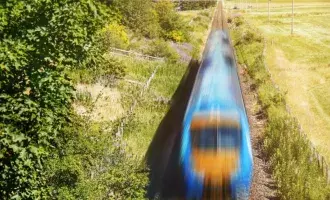Rail customers simply want to receive value for money for the fares they pay, so why is rail pricing so difficult to get right?
It’s true that the coronavirus pandemic has, in all likelihood, changed rail travel in the UK for good. Statistics from the Office of Rail and Road show that prior to the pandemic (between January and March 2019), passengers made 443 million rail journeys, and ordinary ticket fares contributed £8.6 billion in revenue. In the same period this year rail journeys dropped by 37.9% to 275 million – reducing revenue from ordinary tickets to £5.3 billion.
It’s more important than ever to encourage people back on the trains, but pricing is a problem the industry has grappled with for decades. Research from Transport Focus in March 2020 found that value for money was the second most important improvement passengers wanted to see, following closely behind punctuality. Capita’s recent research found 57% of passengers find train tickets difficult to understand.
More pay-as-you-go and dynamic demand-led pricing
British passengers are currently faced with 55 million types of rail fare, and it can often be cheaper to book single tickets than one return. We clearly need to make this fairer and simpler for all and transforming to dynamic pricing is the answer.
Dynamic pricing makes costs highly flexible, based on demand and is used across many industries. Amazon is a leader, repricing millions of items every few minutes. Uber utilises surge pricing to balance supply and demand. Ticketmaster adjusts ticket prices according to the popularity of the artist or venue. Dynamic pricing is also a mainstay of the travel industry, from air tickets to hotel rooms.
The government’s Williams-Shapps Plan for Rail recognises that; “Fewer than half of journeys offer value for money”. However, it stops short of mentioning dynamic pricing by name. However, in May this year, the Centre for Policy Studies said; “We need ticketing to be far simpler, far more flexible on prices – including the abolition of the peak/off-peak divide – and far more digital.”
Rail Partners, which brings together independent owning groups, and train and freight companies, has said they would welcome more pay-as-you-go and dynamic demand-led pricing to spread demand more evenly across the day and week.
Blurred business and leisure travel
Now that hybrid and full-time home working has reduced passenger numbers at peak times, there’s an opportunity to rethink the concept of on and off-peak. Our research found that 51% of passengers would travel at different times if peak/off-peak restrictions were removed, which would spread out passenger numbers and make travel more comfortable and appealing.
Dynamic pricing could also personalise fares to business and leisure passengers. We know that leisure passengers are more likely to book their travel months in advance, while business passengers book last minute. As with air travel, dynamic pricing would enable the industry to launch tickets at a low price which then increases closer to departure.
No net-zero without rail
The Williams-Shapps Plan for Rail champions cleaner, greener railways, stating that; “Britain’s railways can and will spearhead the nation’s ambition to become a world leader in clean, green transport.”
So, it’s crazy to think that rail pricing is actively discouraging people away from the train and towards their car. Dynamic pricing could overcome this by using data algorithms to reduce prices for trains with more capacity. Isn’t it far better, for the environment and the industry, to fill a train with passengers on a reduced fare, than put people off from buying and sending an empty train into the station?

Phil Evans
Market Development Director, Transport
As a domain expert, Phil provides business development, sales and strategy expertise to the energy and transport sectors specialising in new technologies, innovation and digital transformation. His key focus is on decarbonisation, particularly in relation to smart grids, energy storage, smart cities and the link to transportation electrification strategies, as well as emerging mobility services such as mobility-as-a-service.







